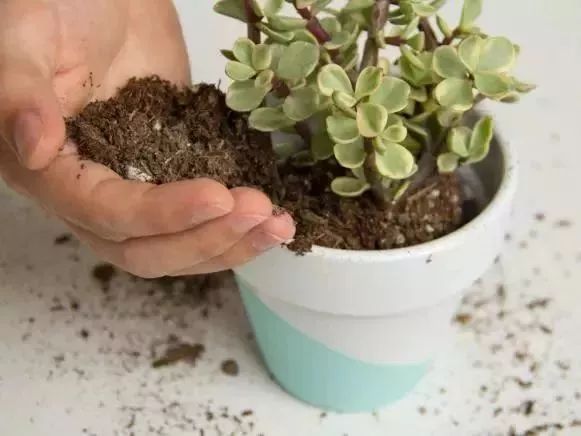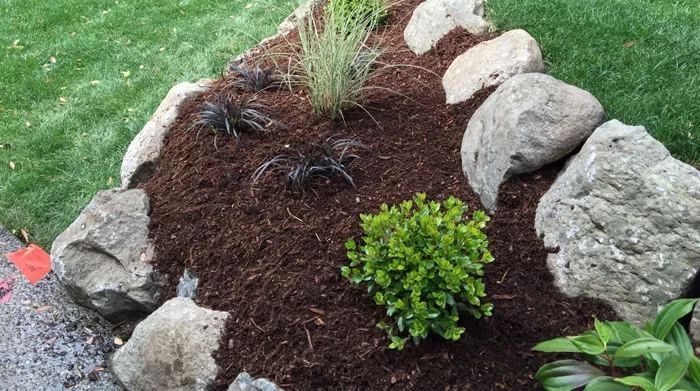Perennial flowering plants can quickly grow a large area when propagated by ramets.

Perennial herbs should be divided every few years to avoid overcrowding and give plants more room to grow, so that plants can grow better and bloom better.
The ideal time for ramets is before the plants go into hibernation in autumn, after the flowers fade and the leaves wither, followed by early spring, when the plants are just waking up, but before they begin to sprout. Neither of these two periods of time will affect the growth of plants, but the reason why autumn is better is that most plants bloom in spring or early summer, and if they split in early spring, it may affect the flowering of the year.
Autumn ramets can have a better chance to recuperate when hibernating in winter, without affecting their growth.
If not divided into plants, these plants will grow more crowded, too many stems huddled together, of course, do not grow well, branches are weak, and even begin to rot in the middle. Otherwise, it is easy to die young, giving birth to insects or molds.
Most perennial herbs need ramets, including peony, cauliflower, daisy, echinacea, fluke, hairpin, snake chrysanthemum, vanilla and so on. There are underground stem plants and bulbs, many of which need to split every few years. Bulbs, such as tulips and daffodils, dig out underground bulbs and break them apart. As for Linglan, Iris and other underground stem plants, it is to dig out the underground stem and split it after cutting.
Some plants do not need to split, or even can not split, these are shrubs, or small shrubs, such as roses, azaleas, lavender, or herbs that do not spread from the roots, such as purse peonies, Christmas roses, and so on.
In fact, ramet is very simple, that is, dig out the roots, separate them into multiple plants, and then plant them in different locations, but before digging, the soil must be wet. On the one hand, it is easy to dig, and on the other hand, it is less likely to hurt the roots. Because the most important thing for plants is to have sound roots. So it's best to do it after it rains. If it doesn't rain for a long time, you must first pour a lot of water to make the soil all wet, and then dig.
And it is best to do it on a cloudy day, not on a hot day, which is less harmful to plants.
In order not to hurt the roots, do not dig too close to the plant, usually the root of the plant is within the range of leaf growth, that is, the dripping line I mentioned in how to water.
After growing for three or four years, most plants are deeply rooted and are not easy to dig. The tools you need at this time are preferably forks like iron forks, or shovels.
After the root of the plant is dug out, the plant can be divided. Usually the roots of herbs can be easily separated and can be broken with both hands. But if there are no ramets for many years, it is possible to get tangled up and difficult to separate, so you can use a shovel.
But the knife used to cut plants, it is best to sterilize in advance, so as not to get infected. In addition, for example, to split Iris and Linglan's underground stem, the knife used must also be completely clean. After cutting the underground stem, you can actually spray disinfectant powder on the incision, that is, garden powder and sulfur powder sold in the horticultural shop. Any kind of disinfectant powder fungicide is useful.
Before replanting after ramet, make sure that each new plant has enough roots and leaves, so that the new plant will be sound, and the future growth and flowering will be the best.
At the same time, between segmentation and planting, do not delay time, do not let the roots of the plant completely dry. If you cannot plant immediately after division, it is best to keep the roots moist, wrap them in newspapers and store them in a cool place. But try not to prolong it. Because this period is not good, the hand tail is very long.
After ramet, part of the leaves can be cut off, or the upper part of the plant, because the leaves will emit water. Cutting off some of the leaves or stems reduces the chances of the leaves giving off water, allowing the plant to concentrate on growing roots.
When planting, don't bury it deeply, even if you don't put the plant too deep, and don't be too shallow. Too deep and too shallow will hurt or even kill the plant. After planting, the soil should be compacted, and there should be no gaps. If there are gaps, there will be opportunities to accumulate water and cause rotten roots in the future. These newly planted potted plants should be placed in a place where there is no direct sun. At the same time, the drainage of the basin should be very good, and the soil should be kept moist. A little bone fat and bone powder can be used when planting.
Newly planted new plants should not be short of water, and the soil should be watered as soon as the soil is dry. But don't water too often, otherwise the soil will always be wet and the roots will rot. And it is easy to cause wet mildew in the soil. Whether it is wet mold or rotten roots will lead to the premature death of plants, and the drainage of the soil is very important.
- Prev

If you plant your own succulent plants, you can make a special soil, which can easily feed the succulent plants.
After years of repeated experiments, flower friends concluded that the perfect succulent soil, these potted soil mixed formula is very suitable for planting succulent plants, used to cultivate potted succulent plants is very good, can quickly restore succulent plants.
- Next

The advantages of planting flowers in the yard covered with a layer of material, these things are very easy to use.
Covering some fallen leaves on plants and flowers is not necessarily good. It may be infected with fungal diseases. Below I will introduce to him the benefits of covering some materials on plants. Of course, we must pay attention to the correct use skills....
Related
- Wuhan Hospital Iron Tree Blooming Result Was Instantly Frightened by the Gardener Master
- Which variety of camellia is the most fragrant and best? Which one do you like best?
- What is the small blue coat, the breeding methods and matters needing attention of the succulent plant
- Dormancy time and maintenance management of succulent plants during dormancy
- Minas succulent how to raise, Minas succulent plant pictures
- What are the varieties of winter succulent plants
- How to raise succulent plants in twelve rolls? let's take a look at some experience of breeding twelve rolls.
- Attention should be paid to water control for succulent plants during dormant period (winter and summer)
- Watering experience of twelve rolls of succulent plants
- Techniques for fertilizing succulent plants. An article will let you know how to fertilize succulent plants.

